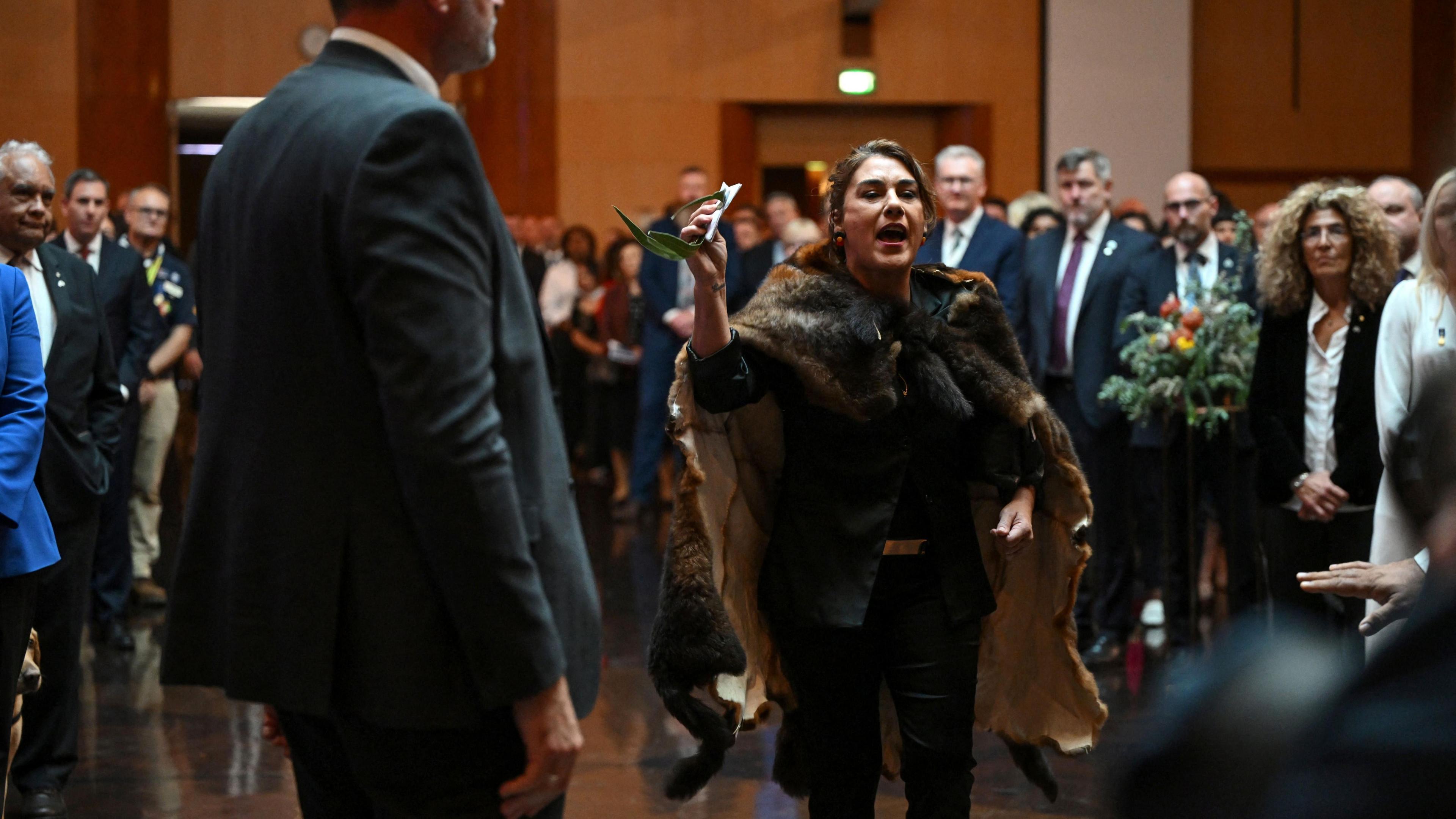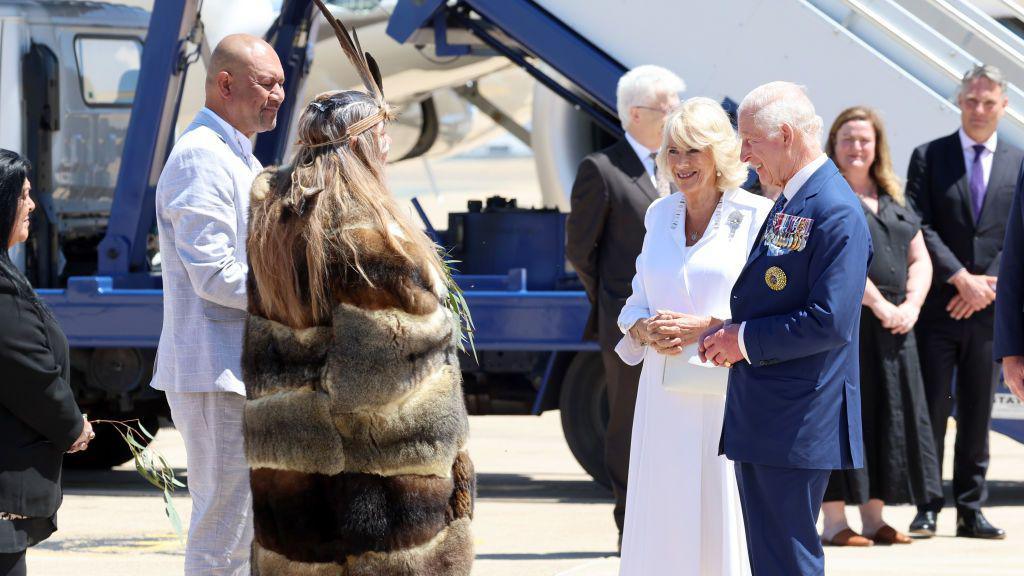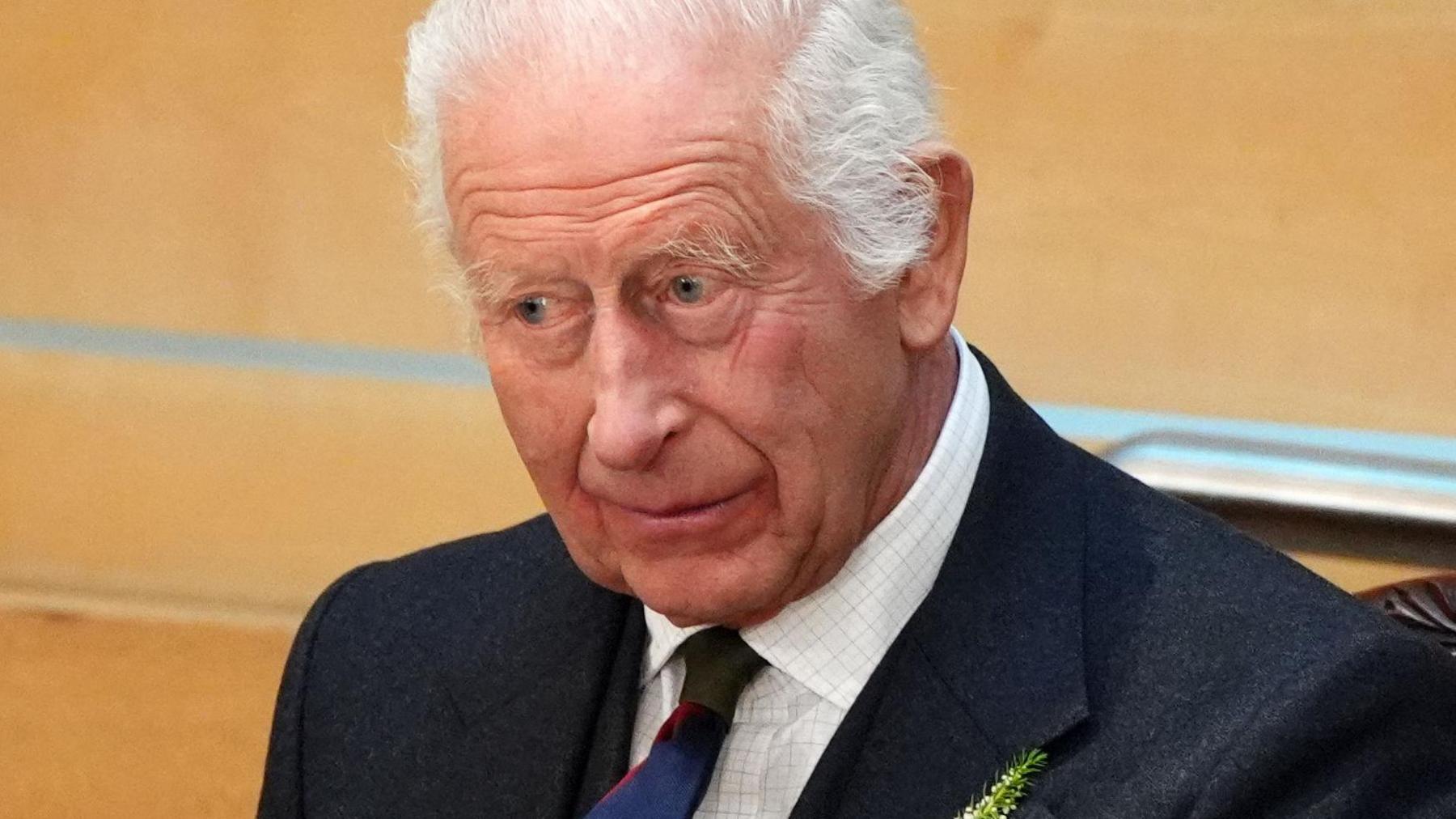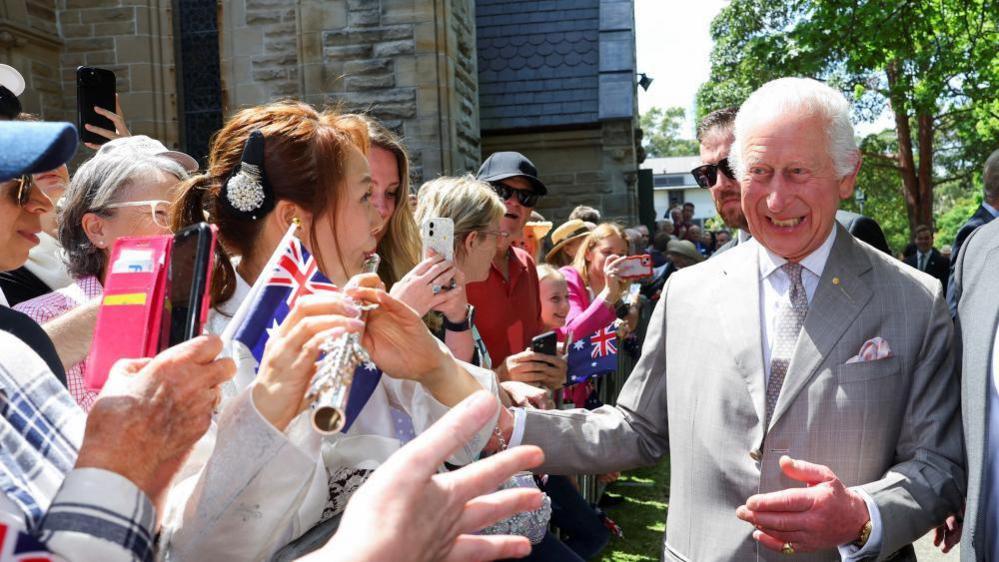The King and the protester: The challenges of a royal tour

The King attended a Parliamentary reception in Canberra during his first visit to Australia as monarch.
- Published
Monday in Canberra was always going to reach into Australia’s complex and challenging history.
Scattered throughout the royal programme were elements that reflected the lives and acknowledged the traditions of the Indigenous community.
They were planned moments from welcome ceremonies to visiting the new war memorial which remembers Aboriginal military sacrifice. They were all organised months ago in minute detail.
But, as so often is the case, it was the unexpected moment that highlighted the tensions that still simmer here between modern Australia and its reconciliation with its past.
Politicians of all political persuasions were invited to hear the King’s remarks in the Great Hall of Canberra’s Parliament House.
Royal aides and security staff would have been aware of Aboriginal Senator Lidia Thorpe’s record of taking a direct approach to campaigning and making her voice heard.
But excluding her from events was never seriously considered and would have looked disrespectful at an engagement praising the power of inclusion.

Senator Lidia Thorpe defended heckling King Charles and accusing him of genocide, telling the BBC that "he's not of this land".
One source said it was sad that Thorpe abused that spirit of trust and respect.
For Buckingham Palace there has been no official comment but obvious frustration that events have been hijacked by the senator.
As she shouted her protests, the King and Queen did not react – instead talking to the other dignitaries sitting alongside them.
It was awkward and uncomfortable, but the King appeared unruffled and took the disruption in his stride.
A trip to Australia always runs the risk of protests, and royal security staff and local police would have factored that in.
Republican demonstrations were deemed a higher risk than those from Indigenous communities.
But, so far, republican campaigners have been low key.
Removing the monarchy and introducing an Australian head of state bubbles under the surface here, but is not a live political debate in a country more concerned with the cost of living crisis.
Over decades, the King was able to watch his mother handle tricky issues here during her 70 year reign.
Queen Elizabeth II met many Indigenous leaders and she was characteristically careful with her words.
In 2000, she become a little more outspoken around the issue of reconciliation.
“I know that the fairness and decency for which this country is rightly renowned will mean that continued efforts are made to ensure that prosperity touches all Australians”, she said.
But Australia’s colonial past is difficult territory for the royal family.
They recognise and acknowledge the difficulties. They pledge to support reconciliation. They understand the pain of past injustices.
For now, what they do not do is apologise or discuss their role in those injustices.
What is clear is the King’s interest in the Indigenous traditions and outlook.

King Charles III and Queen Camilla participated in a traditional Smoking Ceremony with Ngunnawal Elder Auntie Serena Williams after arriving in Canberra.
There is an intellectual curiosity and spiritual engagement with the community.
Before the protest in Canberra, he spoke personally in his address in the Great Hall of Parliament House:
“Throughout my life, Australia’s First Nations peoples have done me the great honour of sharing, so generously, their stories and cultures.
"I can only say how much my own experience has been shaped and strengthened by such traditional wisdom."
Canberra was a tricky day.
But amongst the drama, thousands of people came out to see the King and Queen Camilla wherever there was a “meet the public” moment.
The reception was genuinely warm and supportive and described as “awesome” by a royal aide.
A final day of engagements in Sydney lies ahead.
The protest won’t define this visit.
But it is a reminder of the unpredictability and historical baggage that royal tours can bring.

Sign up here to get the latest royal stories and analysis straight to your inbox every week with our Royal Watch newsletter. Those outside the UK can sign up here.
- Published12 October 2024

- Published21 October 2024

- Published20 October 2024
